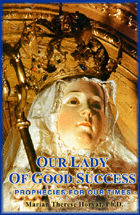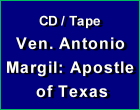Stories & Legends
 |
 |
 |
 |
 |
 |
 |
The Flowers of St. Patrick
In the Life of St. Patrick by Fr. Morris, there is an account from the pen of Msgr. Chevallier, President of the Archaeological Society of Tours in 1850 about the mysterious blossom in France that bears the name of Ireland’s Apostle. The French call the blossom les fleurs de St. Patrice (the flowers of St. Patrick).
Fr. Morris, who includes the account in the Appendix of his book, notes: “We have already observed how, in Ireland, natural monuments are a distinguishing feature of St. Patrick’s history. It is certainly very remarkable that the same characteristic should attach to the record of his life in France, where, year after year, thousands come to gather those winter flowers which are believed to be an undying witness of St. Patrick’s connection with St. Martin of Tours. ...
“When the present writer visited St. Patrice in August, 1881, he was struck by the extraordinary beauty and luxuriance of the foliage on the tree. It was so dense from the ground upwards that it was impossible to distinguish the stem, and he could understand how, when it flowers at Christmas, it supplies the country round with trophies of St. Patrick.
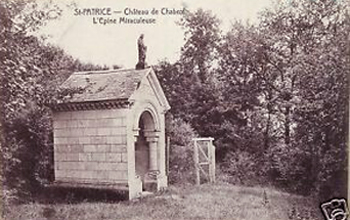 “It also appears that these blossoms are objects of religious veneration, as we learn that M. Dupont always kept a branch of the Fleurs de St. Patrice hung up in his room. The whole neighborhood is redolent of St. Patrick. The railway stops at the Station St. Patrice, the Commune itself is named after the Saint, while at about 30 yards from the tree stands the ancient Parish Church dedicated to the Apostle of Ireland. From the style of its architecture it is clear that this church dates from the 10th or 11th century, and in the Cartulaire de l’Abbaye de Noyers, beginning with the year 1035, we find no less than 30 charters relating to this church, and parish and cemetery attached to it."
“It also appears that these blossoms are objects of religious veneration, as we learn that M. Dupont always kept a branch of the Fleurs de St. Patrice hung up in his room. The whole neighborhood is redolent of St. Patrick. The railway stops at the Station St. Patrice, the Commune itself is named after the Saint, while at about 30 yards from the tree stands the ancient Parish Church dedicated to the Apostle of Ireland. From the style of its architecture it is clear that this church dates from the 10th or 11th century, and in the Cartulaire de l’Abbaye de Noyers, beginning with the year 1035, we find no less than 30 charters relating to this church, and parish and cemetery attached to it."
Msgr. Chevallier continues to describe:
“On the banks of the Loire, a few leagues from Tours, a very remarkable phenomenon is repeated year after year from time immemorial, one for which science as yet has given no satisfactory explanation. This phenomenon, too little known, consists in the blossoming of the blackthorn, prunus spinosa, commonly called the sloe, in the midst of the rigors of winter.
“We have lately verified this circumstance with our own eyes, and can vouch for its truth without fear of contradiction. We can appeal to the testimony of thousands who at the end of December in each year are eyewitnesses to its repetition, and we have ourselves gathered these extraordinary flowers.
“This remarkable shrub is to be found at St. Patrice, upon the slope of a hill not far from the Chateau de Rochecotte. The circulation of the sap, which should be suspended in winter, is plainly revealed by the moist state of the bark, which easily separates from the wood it covers. The buds swell, the flowers expand as in the month of April, and cover the boughs with aromatic and snowlike flowers, while a few leaves more timidly venture to expose their delicate verdure to the icy north wind.
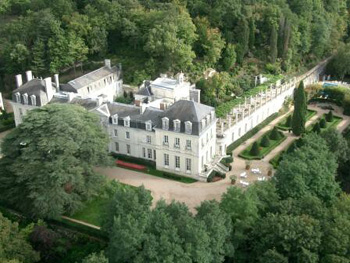 Shall I venture to add that to the flowers succeed the fruit, and at the beginning of January a small berry appears attached to a long peduncle in the midst of the withered and discolored petals, which soon shrivels and dries up.
Shall I venture to add that to the flowers succeed the fruit, and at the beginning of January a small berry appears attached to a long peduncle in the midst of the withered and discolored petals, which soon shrivels and dries up.
“This singular growth of flowers is almost unknown, although it has been repeated every year from time immemorial. The oldest inhabitants of St. Patrice have always seen it take place at a fixed time of the year, no matter how severe the season may be. Such was also the ancient tradition of their forefathers.
The legend we are about to relate appears to attribute a very remote origin to the annual blossoming; but, as the shrub itself appears quite young, it is probable that it is renewed from the roots. However, this phenomenon is limited to the specific locality and to the shrub in question. Cuttings transplanted elsewhere have only blossomed in the spring, and the hawthorns that grow amidst the blackthorns do not manifest any circulation of sap.
“The incredulous will object that, after all, this circumstance is not more extraordinary than the flowering of the lilac in November, when the buds by an unwary mistake suppose that they have found the soft breath of spring in the still mild temperature. Our readers must not be deceived; the blackthorn of St. Patrick grows, develops, and bears fruit amidst the rigors of winter in the most icy temperature.
“This year the flowers were in bloom from Christmas until the first of January, that is, at a time when the thermometer was almost always below freezing point. Although growing on the slope of a hill, this shrub is in no way sheltered from the north wind. Its branches are encrusted with hoar-frost; the icy north-east wind blows violently amongst them, and it often happens that the shrub is loaded at one and the same time with the snow of winter, and the snow of its own flowers.”
Why does it blossom?
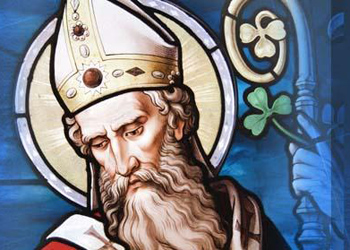 “The inhabitants of St. Patrice record an ancient tradition, which in its simplicity is full of freshness and poetry. St. Patrick, it is said, was on his way from Ireland to join St. Martin in Gaul, attracted by the fame of St. Martin’s sanctity and miracles. Having arrived at the bank of the Loire, near the spot where the church now bearing his name has been built, he rested under a shrub.
“The inhabitants of St. Patrice record an ancient tradition, which in its simplicity is full of freshness and poetry. St. Patrick, it is said, was on his way from Ireland to join St. Martin in Gaul, attracted by the fame of St. Martin’s sanctity and miracles. Having arrived at the bank of the Loire, near the spot where the church now bearing his name has been built, he rested under a shrub.
It was Christmas time, when the cold was intense. In honor of the Saint, the shrub expanded its branches, and shaking off the snow which rested on them, by an unheard-of prodigy arrayed itself in flowers white as the snow itself. St. Patrick crossed the Loire on his cloak, and on reaching the opposite bank, another blackthorn under which he rested at once burst out into flowers. Since that time, says the chronicle, the two shrubs have never ceased to blossom at Christmas, in honor of St. Patrick.”

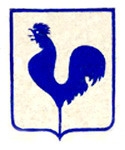
Fr. Morris, who includes the account in the Appendix of his book, notes: “We have already observed how, in Ireland, natural monuments are a distinguishing feature of St. Patrick’s history. It is certainly very remarkable that the same characteristic should attach to the record of his life in France, where, year after year, thousands come to gather those winter flowers which are believed to be an undying witness of St. Patrick’s connection with St. Martin of Tours. ...
“When the present writer visited St. Patrice in August, 1881, he was struck by the extraordinary beauty and luxuriance of the foliage on the tree. It was so dense from the ground upwards that it was impossible to distinguish the stem, and he could understand how, when it flowers at Christmas, it supplies the country round with trophies of St. Patrick.

Above the Chapel of St. Patrick in the comune of Saint Patrice; behind it the blooming thorns
Msgr. Chevallier continues to describe:
“On the banks of the Loire, a few leagues from Tours, a very remarkable phenomenon is repeated year after year from time immemorial, one for which science as yet has given no satisfactory explanation. This phenomenon, too little known, consists in the blossoming of the blackthorn, prunus spinosa, commonly called the sloe, in the midst of the rigors of winter.
“We have lately verified this circumstance with our own eyes, and can vouch for its truth without fear of contradiction. We can appeal to the testimony of thousands who at the end of December in each year are eyewitnesses to its repetition, and we have ourselves gathered these extraordinary flowers.
“This remarkable shrub is to be found at St. Patrice, upon the slope of a hill not far from the Chateau de Rochecotte. The circulation of the sap, which should be suspended in winter, is plainly revealed by the moist state of the bark, which easily separates from the wood it covers. The buds swell, the flowers expand as in the month of April, and cover the boughs with aromatic and snowlike flowers, while a few leaves more timidly venture to expose their delicate verdure to the icy north wind.

The flowers blossom in the winter not far from the Chateau de Rochecotte, above, in the Loire Valley
“This singular growth of flowers is almost unknown, although it has been repeated every year from time immemorial. The oldest inhabitants of St. Patrice have always seen it take place at a fixed time of the year, no matter how severe the season may be. Such was also the ancient tradition of their forefathers.
The legend we are about to relate appears to attribute a very remote origin to the annual blossoming; but, as the shrub itself appears quite young, it is probable that it is renewed from the roots. However, this phenomenon is limited to the specific locality and to the shrub in question. Cuttings transplanted elsewhere have only blossomed in the spring, and the hawthorns that grow amidst the blackthorns do not manifest any circulation of sap.
“The incredulous will object that, after all, this circumstance is not more extraordinary than the flowering of the lilac in November, when the buds by an unwary mistake suppose that they have found the soft breath of spring in the still mild temperature. Our readers must not be deceived; the blackthorn of St. Patrick grows, develops, and bears fruit amidst the rigors of winter in the most icy temperature.
“This year the flowers were in bloom from Christmas until the first of January, that is, at a time when the thermometer was almost always below freezing point. Although growing on the slope of a hill, this shrub is in no way sheltered from the north wind. Its branches are encrusted with hoar-frost; the icy north-east wind blows violently amongst them, and it often happens that the shrub is loaded at one and the same time with the snow of winter, and the snow of its own flowers.”
Why does it blossom?

There is a long-standing devotion to St. Patrick in France
It was Christmas time, when the cold was intense. In honor of the Saint, the shrub expanded its branches, and shaking off the snow which rested on them, by an unheard-of prodigy arrayed itself in flowers white as the snow itself. St. Patrick crossed the Loire on his cloak, and on reaching the opposite bank, another blackthorn under which he rested at once burst out into flowers. Since that time, says the chronicle, the two shrubs have never ceased to blossom at Christmas, in honor of St. Patrick.”

(Adapted from William B. Morris, The Life of St. Patrick, Apostle of Ireland,
London: Burns and Oates, 1878, Appendix, pp. 271-277)
Posted December 28, 2013
London: Burns and Oates, 1878, Appendix, pp. 271-277)
Posted December 28, 2013





